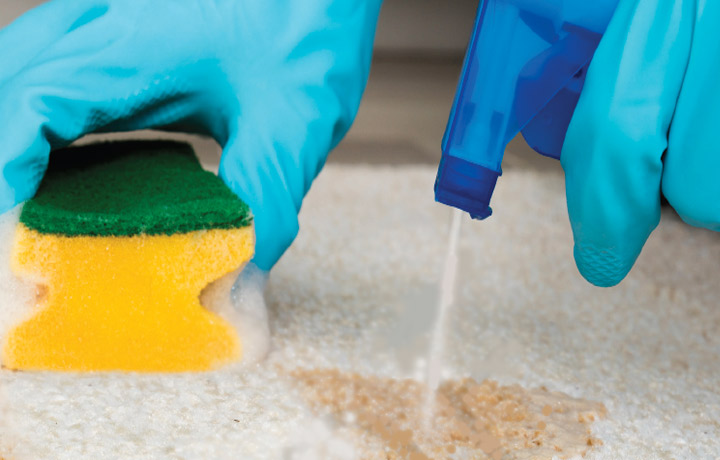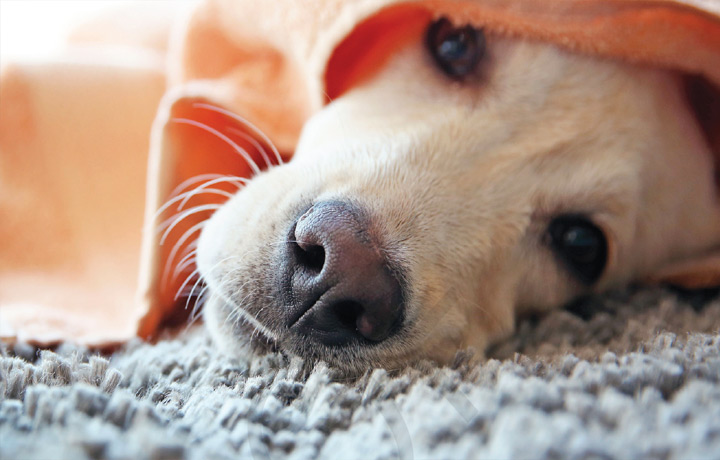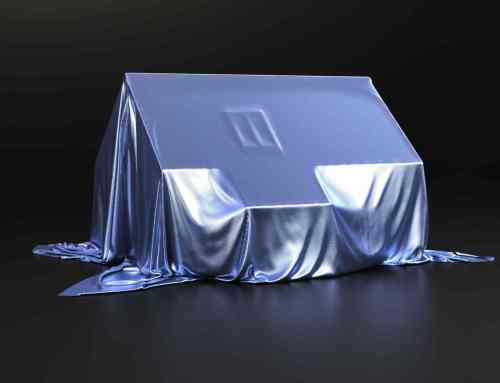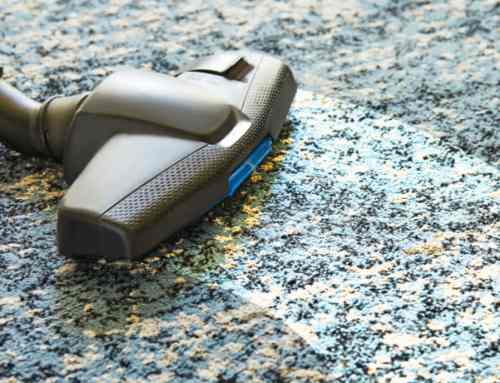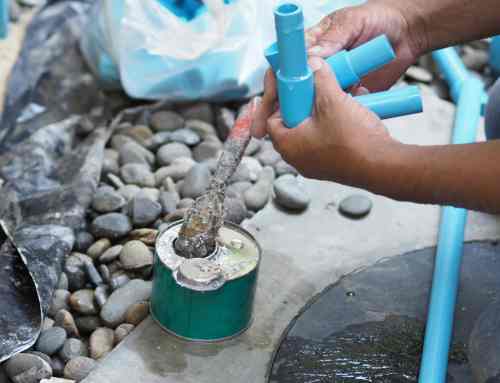Dealing With Pet Accidents
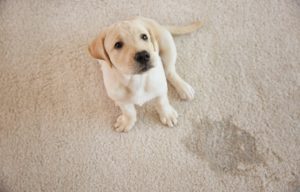 Whether it’s chewing, begging, or jumping, our pets’ actions are a part of their unique personalities, for better or worse. However, there is one undesirable habit that most pet owners would agree causes the most embarrassment: pet accidents involving urine. To animals, urine is an important social tool, used as a calling card, mate attractant or a territorial warning. To us, it is odor and stain.
Whether it’s chewing, begging, or jumping, our pets’ actions are a part of their unique personalities, for better or worse. However, there is one undesirable habit that most pet owners would agree causes the most embarrassment: pet accidents involving urine. To animals, urine is an important social tool, used as a calling card, mate attractant or a territorial warning. To us, it is odor and stain.
If you are lucky enough to catch the animal in the act, you can pour salt liberally onto the deposit while it is still wet. Use enough salt to completely cover the spot. The salt will absorb the urine. Let it dry and simply vacuum it away. But most animals are secretive about peeing on the carpet; most of the time it is dry by the time you discover it.
What You Can Do About Pet Accidents – Urine
Single, light urine deposits may be treated by applying a neutral carpet cleaning agent, gentle agitation and a thorough rinse. Finish the job by placing a folded white towel on the area. Set a weight on it and leave overnight; the remaining moisture and residue will wick into the towel.
Once urine has reached the point that it has penetrated the carpet and the cushion, removal of the odor becomes more difficult. Most cleaning and deodorizing methods are designed to treat the carpet face fibers, not the carpet backing and cushion. If you don’t get out all of the urine, changes in humidity and temperature will result in reactivation and the odor will eventually return. Due to the chemistry of urine, old, heavy deposits are much more difficult to treat and you will need the help of a professional.
Why? Because urine undergoes a dramatic chemical change as it ages. The water in the urine evaporates leaving behind organic compounds that become more concentrated. Bacteria begin to consume the urine, breaking down the proteins, sugars and other organic compounds. Once the contamination has reached this point, it also becomes a potential health threat to humans. During the process of bacterial digestion the bacteria secrete ammonia and a strong, pungent odor develops.
The urine turns from a mild acid to a strong alkali. This strong alkaline deposit attacks the dyes in some carpets. Over time, the dyes can be weakened causing permanent color loss and yellowing. The adhesives used in the carpet backing can be dissolved, and the carpet can literally fall apart. Permanent damage to wood subfloors will also result from deep penetration of concentrated urine deposits, requiring additional repairs.
Acidic cleaning agents neutralize alkaline residues and make the urine deposits easier to remove during normal cleaning. One urine contamination treatment available contains an enzyme called urease which is effective at breaking down the organicomponents of urine. Pairing agents are specialized deodorizers that bond to odor-causing molecules and create a new odorless or pleasant-smelling molecule. Oxidizers use the power of oxygen to eliminate urine odor and help remove staining. Oxidizers have the additional benefit of killing bacteria and often help in removing the yellow stain. But care is required when using oxidizers since these cleaning agents are not compatible with all types of carpet.
The decision of which method to use will depend on several factors. The amount of contamination present, the depth of penetration, the construction of the carpet, the fiber content, the installation method, the sub-floor type and the size of the affected area must all be considered.
Are you dealing with pet accidents? Contact Clean Pro today for more tips, help or to schedule your next appointment.



